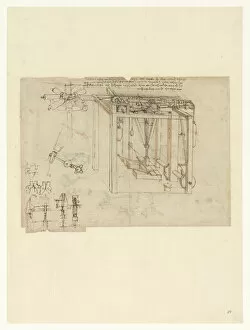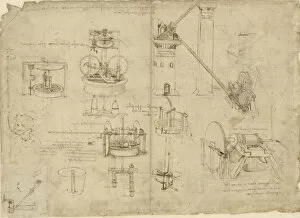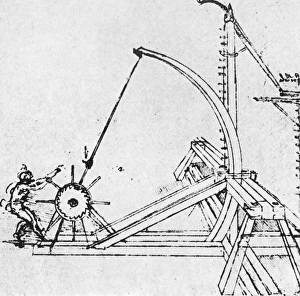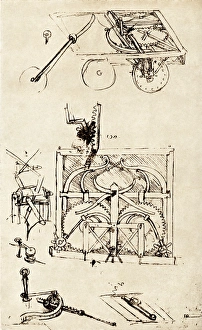Codex Atlanticus Collection
The Codex Atlanticus, a collection of Leonardo da Vinci's remarkable drawings and sketches, offers a glimpse into the genius mind of this Renaissance polymath
All Professionally Made to Order for Quick Shipping
The Codex Atlanticus, a collection of Leonardo da Vinci's remarkable drawings and sketches, offers a glimpse into the genius mind of this Renaissance polymath. Spanning various subjects and inventions, it showcases his immense curiosity and innovative spirit. Among its pages lies "The Bridge (Ponte salvatico), " an architectural marvel envisioned by da Vinci himself. This intricate design demonstrates his mastery in engineering as he sought to create a bridge that could withstand the test of time. Another captivating drawing is the "Study of two mortars able to throw explosive bombs. " Here, da Vinci delves into military technology, exploring methods to improve warfare through advanced weaponry. His meticulous attention to detail highlights his keen interest in understanding projectile trajectories for maximum impact. Intriguingly, the codex also reveals da Vinci's fascination with alchemy through his creation of a "Machine to produce gold foil. " This invention reflects his relentless pursuit of knowledge and experimentation across diverse fields. Da Vinci's ingenuity extends further with sketches depicting water pumps designed around 1480. These illustrations showcase his deep understanding of hydraulics and demonstrate how he applied scientific principles to solve practical problems. Not limited to science alone, they also features artistic instruments like the "Perspectograph, " an optical device used for accurate perspective drawing. Da Vinci's commitment to capturing reality with precision shines through in this instrument's design. Amidst these technical wonders lies beauty in simplicity - such as the elegant sketch titled "Fountain. " With just a few strokes, da Vinci captures both grace and movement while showcasing his ability to find artistry even in everyday objects. His imaginative ideas continue with designs like an automated turnspit powered by counterweights or hot air. These concepts reveal not only his inventive nature but also highlight how he sought practical solutions for mundane tasks during daily life. Moreover, we witness da Vinci's fascination with flight through designs like the mechanical wing.
















